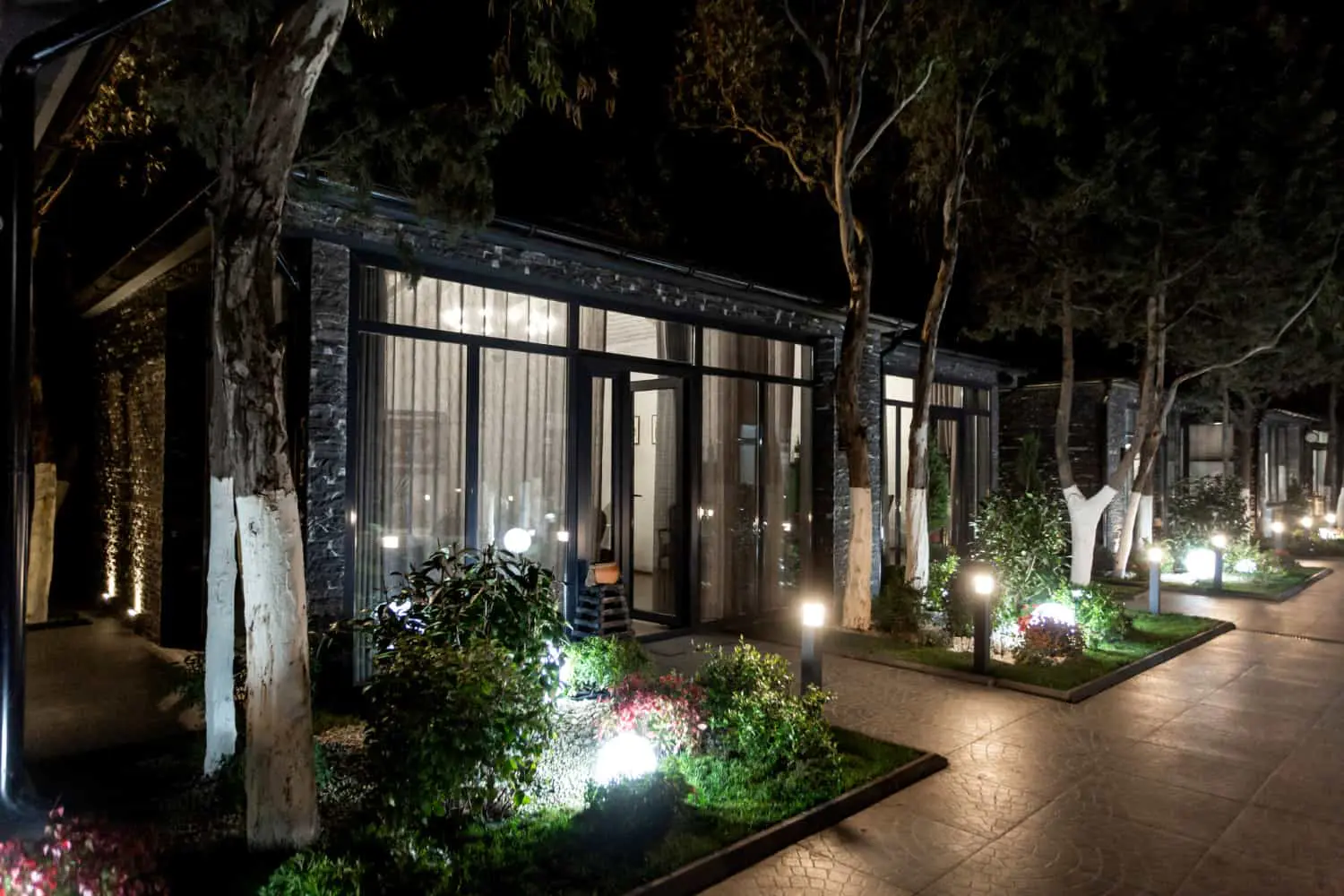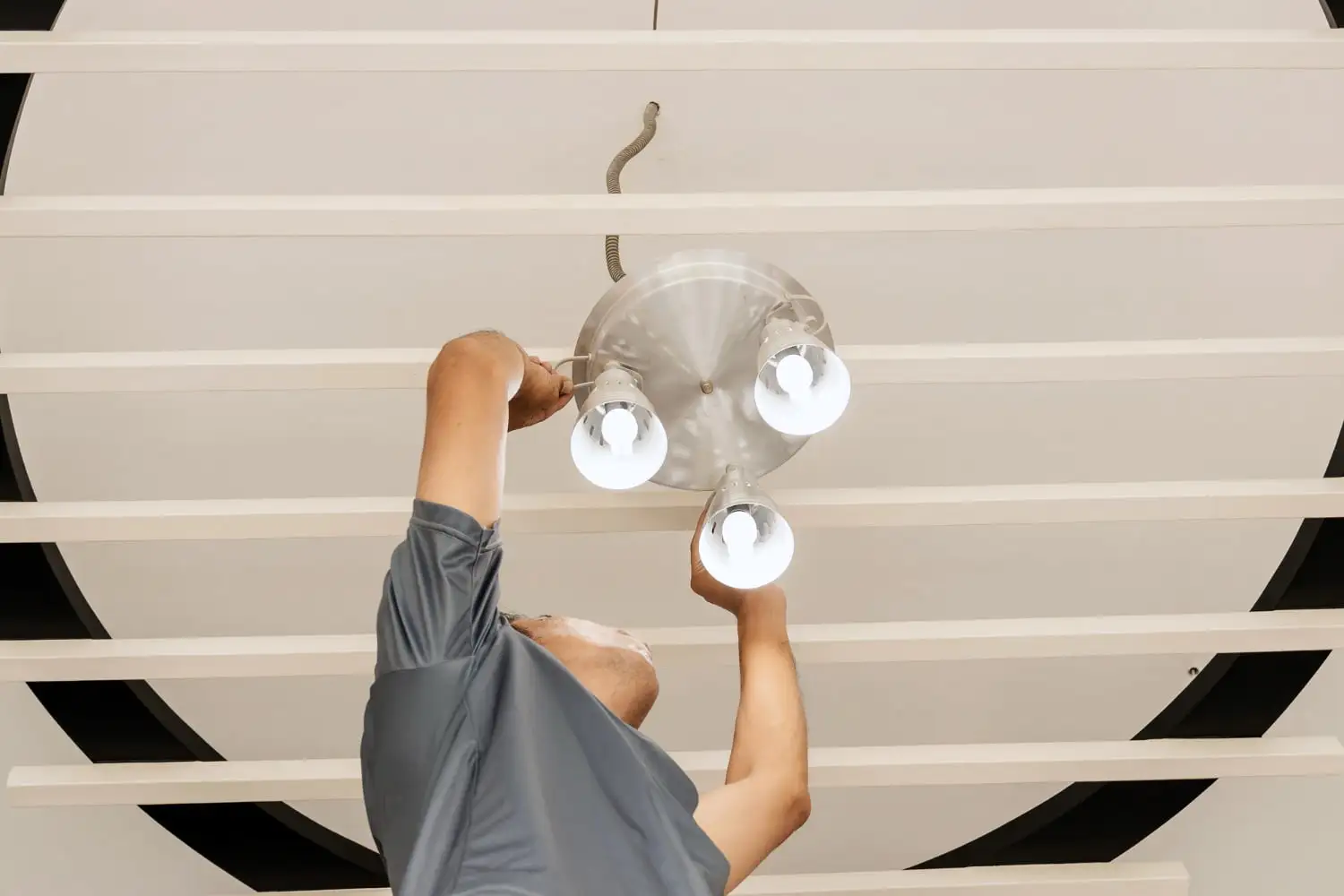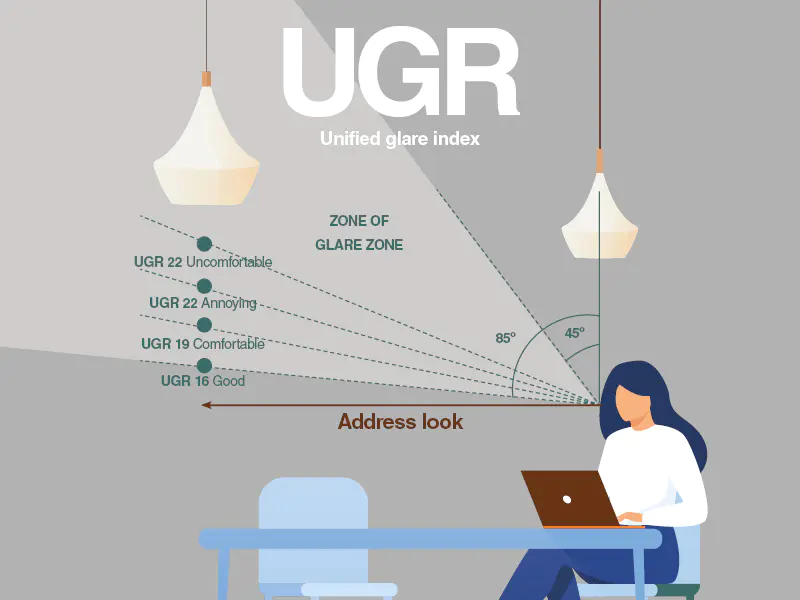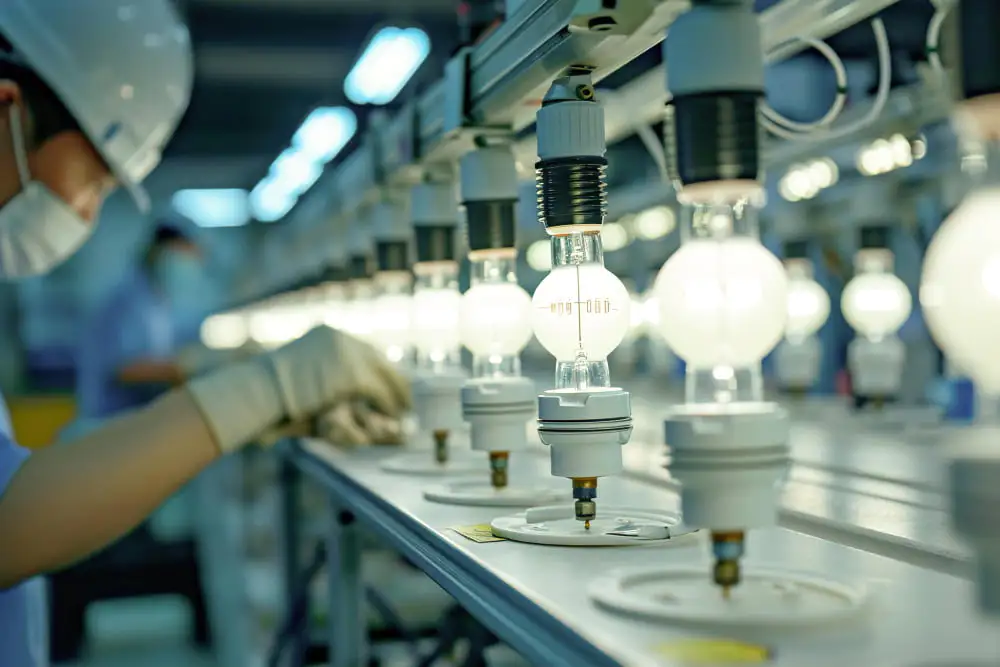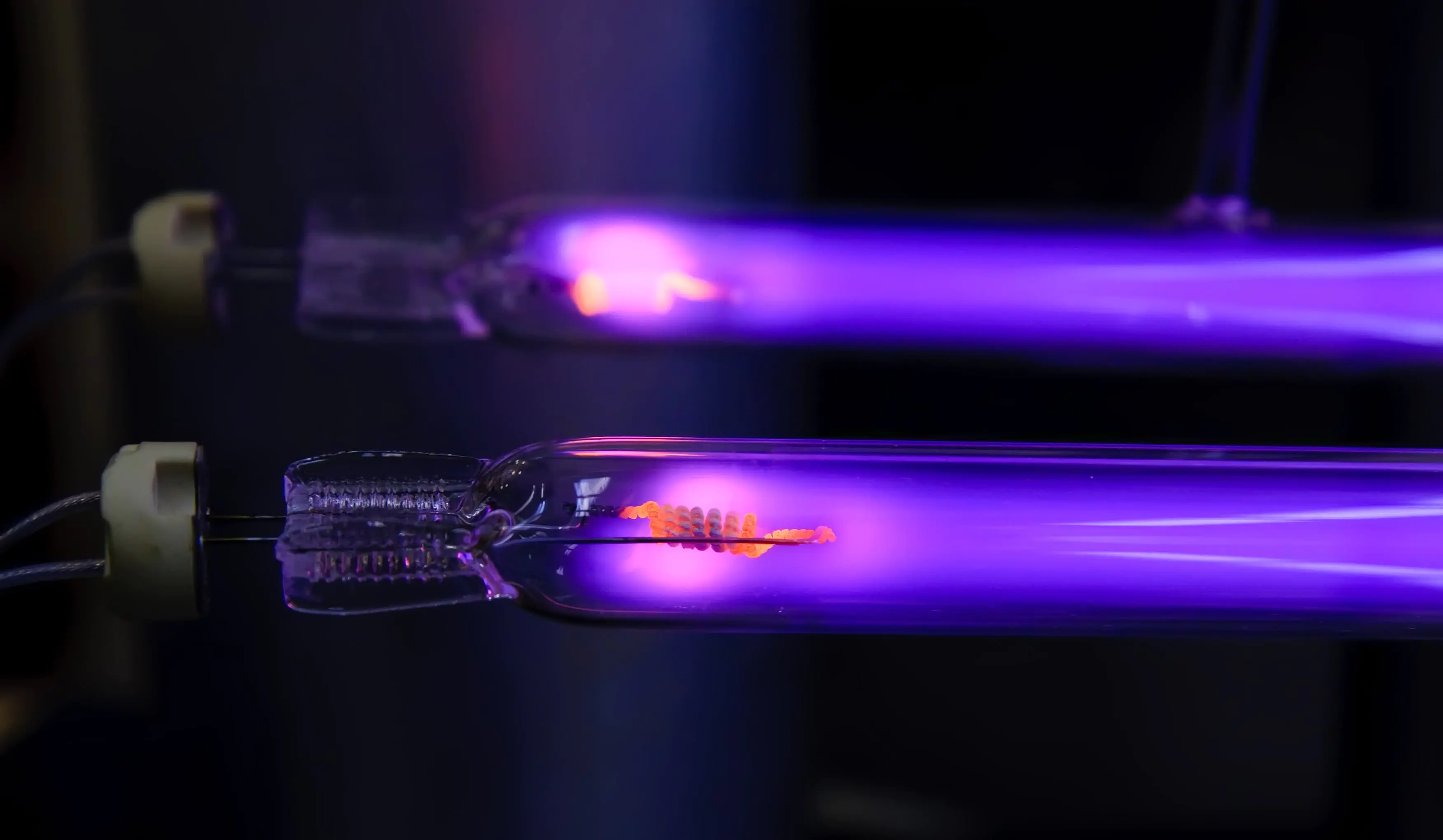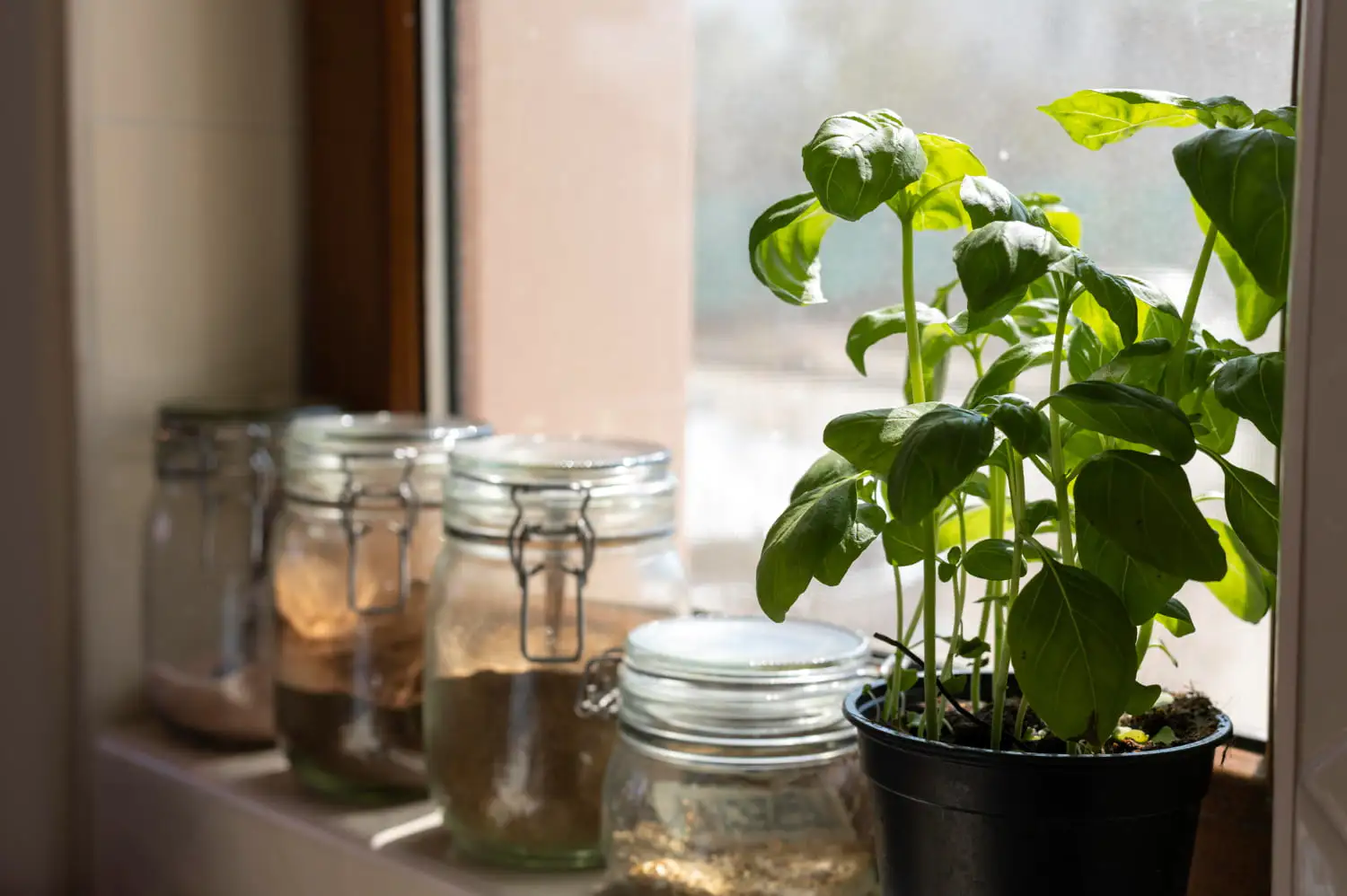Concerts and stage performances are vivacious and energetic, so much so that they can wake a dead mouse up. The blaring lights, the bright color schemes, the shifting of hue and saturation when the beat drops and the stage lighting color combinations of warm and cool colors are bound to grab their audience’s attention. Color surrounds people in every way possible. It is such a manipulative factor that sometimes colors are assigned symbols of emotion and passion. It becomes mandatory to use specific colors in certain places, so the audience is relieved of color fatigue. Color usage is a powerful and deadly weapon that causes consequences when wielded a certain way. It is essential to keep certain things in mind while trying to complement colors for an occasion as lively as a stage performance. You can contact Vorlane as it offers the best tips and equipment for quality lighting.
Primary Functions Of Color For Stage And Audiences
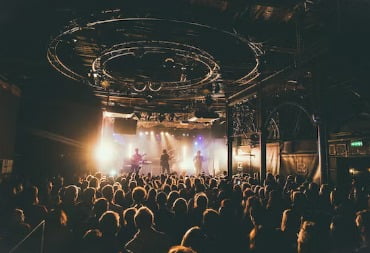
Does one ever wonder what color actually is and if it exists? Color is less of a thing and more of a phenomenon of light. As far as wavelengths are concerned, the human eyes and brain are connected. Certain colors have specific wavelengths that stimulate the brain in certain areas when light hits the receptors located in the eyes. Such importance of color is yet to be taken for granted by stage lighting designers. Color provides a lot of depth when used on the stage where everyone’s eyes lie. Some of the primary functions that serve audiences include, but are not limited to:
- Visibility: As a matter of fact, the primary purpose of proper stage lighting is visibility. Proper and colorful stage lighting enables the audience to see the stage performers and the show as clearly as it fits. However, do not confuse lighting as an all-around means of creativity. One can also create inquisitiveness and anxious anticipation through silhouettes, which have much to do with the stage play.
- Create a narrative: From an artist’s perspective, creating a compelling and attractive story is one of the top priorities. Various colorful stage lighting is used to cast a spell on the audience and build a sense of emotional play. Colors make serenity and give the watchers the means to relate themselves to the moment. Colors are primary for mood generation.
- Direction: The concert designer and operator have a common goal- to put the eyes of the audience in the right place. They have a similar role as a cameraman. Where the limelight shines is where people see, and the rest becomes abandoned scenery. It creates excellent emphasis and has the power to give life to specific elements in the composition. Subsequently, it also has the caliber to provide contrast.
Light Colors And Emotions
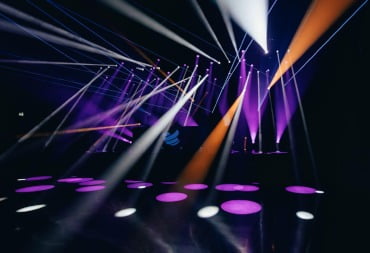
One primary aspect that distinguishes living beings from the material world is emotion. As mentioned, colors are king for visual and emotional pleasure and pain. Using them arbitrarily without proper knowledge can cause the audience to sense disequilibrium, triggering migraines and fighting fatigue. As such, the importance of knowing what stage lighting color combos for LED lights work is growing.
Color And Emotion
Emotions and colors go hand-in-hand. Colors can trigger various emotions as each color has its own connection. Expression through colors becomes critical for getting the composition message through. Knowing what color to use for one’s theme can significantly enhance the stage experience for the audience and the performers.
The primary colors form the base for all the other derivatives. However, they have their own individuality when it comes to emotional links. The color black and white is created when all and no colors are present, respectively. Their meaning is quite simple to understand. The following gives the gist of all colors and their respective feelings associated with them.
White Stage lighting
The color white is popularly associated with being pure and divine. One feels peaceful when seeing the color white. It gives an angelic trance to the audience, thus, spreading serenity to those who see it. It is also associated with elegance. The best LED PAR light suppliers can create such white stage lighting, that it mesmerizes the audience.
Orange Stage Lighting
The color orange is commonly associated with friendship and comfort. A contrast to blue, it means liveliness and companionship of another being. It is a warmth-filled color that pours energy into the audience. Orange stage lighting is, thus, useful for passionate performances.
Pink Stage Lighting
The color pink emphasizes the feminine quality present in every being. It denotes the innocence of the young and growing. Pink is associated with youth and playfulness. Depending on the warmth and saturation, it may also mean love and lust.
Yellow Stage Lighting
The color yellow creates a sense of delightfulness in the audience. It is a happy color that is also commonly associated with youth. Yellow means what it is, bright and cheerful.
Blue Stage Lighting
The color blue is associated with the feeling of calmness and is close to the water element. Blue is a melancholic color that means loneliness and depression.
Red Stage Lighting
The color red is often called the color of danger. It is used in traffic lights and hospitals for this very reason. It shows passion, anger, and animosity. Those stage lighting color combinations having red as a component can also mean blood thirst and vengeance.
Green Stage Lighting
The color green denotes the quality of being motherly, caring, and calming. It also means money and luck.
Colors make people feel so many things. One can definitely find power when this weapon is understood and use it to manipulate the audience to fit their artistic narrative. Color is a means of communication that words don’t quite convey. However, it is advised to prevent yourself from getting caught up with the meanings behind every color. There are as many colors as there are people, and one can always derive emotion through context.
Main Lighting Design Theories And Rules
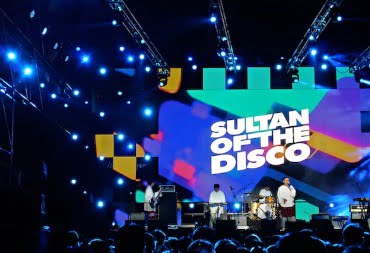
Colors don’t have a norm. Fortunately, lighting does.
All kinds of art have specific rules that can be bent and broken as circumstances change. The foundation is key. Stage lighting operators should know their LED stage lighting color theory and how they can use this knowledge to create a beautiful and enticing palette. The following rules help:
Additive Color Theory – RGB Lighting
The first part of the theory is called an additive color theory. This theory dramatically revolves around the concept of mixing the primary colors and “adding” one to another. It explains itself as RGB lighting. However, one can also use a white color or an amber hue to create a dynamic palette to choose from. Shifting one primary color to another is the main form of this theory. Such shifting creates a “fading effect” that can bring several colors to the stage lighting.
Additive color mixing is done through various additions of wavelengths. This adding and mixing creates a wide range of colors from 3 basic additive lightings- the colors red, blue, and green. Certain combinations of colors give dynamism. Look through the following for a better idea:
Red + Green = Yellow
Green + Blue = Cyan
Red + Blue = Magenta
Adding neutral colors like amber and white serves no purpose but to widen the range of colors and expand the baseline. This sort of mixing is called RGBW, with the letter W representing the color white. Furthermore, one can play with the intensity, hue, and saturation to further bring more colors to the stage. The light sources can be made from color gels, which are applied to white lights to mimic the colors produced by LEDs, or use regular LEDs to operate this theory and put it into practice. Playing with tinges can help one understand how to make colors relate. Tinges are often used in filters, making it lean towards one color more than the other. Such kind of mixing is an added advantage in stage performances. Take a look through the following:
Cyan = Blue light + green light (shining on top of each other). However, cyan can look bluer if more blue is shone on it, creating a blue tinge of cyan. Subsequently, cyan can look green, creating a green touch.
Subtractive Color Theory – CMY Lighting
The subtractive color theory is the next part of color theory, often related to the first principle. Often referred to as CMY lighting, it uses the complete opposite of the additive color theory. This is quite commonly used in concerts to use already mixed colors to bring primary colors to life.
C stands for Cyan
M stands for Magenta
Y stands for Yellow
To put it in simple words, when the colors mentioned above are subtracted from white light, primary colors are obtained. Rather than mixing various colors to get desired results, subtractive color theory commences from a source of white light. Certain filters will be fixed to remove or “subtract” wavelengths of specific colors. In this theory, CMY is the colored filter that results in other beautiful colors. They have the potential to control wavelengths arising from the white lamp. It is basically a process of extraction. Many use color gels to implement this theory, which is now replaced by intelligent lighting fixtures. Look through the following to better understand the operation:
Blue + Green = Cyan
White – Cyan = Blue and Green
Yellow = Red + Green
Blue and Green – Yellow filter = Green
As mentioned, cyan is a mixture of the colors blue and green. Putting white through a cyan-colored filter subtracts all wavelengths not associated with blue and green. The resultant colors are, therefore, just blue and green. Similarly, passing through a yellow filter removes blue and results in only green. Why? Because yellow, as a matter of fact, is made of the colors red and green.
Why is this better than the previously mentioned theory? That is because it allows one to obtain a more significant amount of colors than additive theory. This enables deep mixing of the resultant colors, offering a more dynamic palette and variety in stage lighting choices. As far as this theory is concerned, white light is made of many colors which cannot be accessed by simply adding colors. So, subtracting wavelengths provides residual colors, thereby creating depth. Moreover, this principle requires only one light source.
Colored Stage Light Gels
Colored Stage Light Gels are another method that enables subtractive color manipulation. Not as popular as they used to be, these colored gels subtract specific wavelengths from the light source, producing desired colors. This is less of a principle and more of equipment to put subtractive color theory into practicality. To put it simply, colored stage light gels are nothing but translucent gel covers manufactured using plastic recently. Though these gels are used for subtractive and additive color mixing, they are mainly used for the former. The usage of the two is as follows:
- For additive mixing of colors, use primary color gels on two different light sources. Flash them on top of each other to make secondary colors
- For subtractive mixing of colors, use secondary color gels on one light source. The plastic cover will reflect colors that form a part of the color gel while filtering out the others.
Understanding and implementing this knowledge requires depth and dimension in understanding light color theory. This is just as broad of a theory as science is; thus, knowing the principle of lighting color theory, using a variety of equipment, and conducting experiments with different colors are the ways to go.
Color gels are also called colored filters. They are used in concerts, stage shows, various theater events, photography, and cinematography. They are used mainly for correcting colors and deriving desired wavelengths. They are replaced by intelligent fixtures due to their long life span, in contrast with the shorter life span of colored gels. It is a temporary piece of plastic that can be worn out quickly, especially in colors that have short wavelengths. Hence, they have been replaced by some of the more long-lasting and permanent color correctors, like filtering glass and fixtures. Different LED stage lighting companies support or oppose their usage.
HSL (Hue, Saturation, and Luminosity)
One aspect of manipulating color is through additives and subtractives. Another factor is tweaking HSL. HSL stands for Hue, Saturation, and Luminosity. Every color in this universe is a number for these three components. Given this fact, the combinations that can be possible are almost endless. Each of the components is explained further in detail:
Hue: Colors are nothing but stimuli. The brain receives stimuli from our eyes, which varies with the amount of light that bounces back. Simply put, it is described as what a color is. From the spectrum of violet, indigo, blue, green, yellow, orange, and red, hue defines the color, regardless of its brightness or saturation. Numbers are assigned to each hue, so colors can be identified easily. Hue is a color for which no chroma, luminance, pigment, tint, or shade exists.
Saturation: Saturation defines the purity of the color. The purer the hue, the higher the saturation, and the closer it is to white (the most pristine color in the wheel). Saturation is also called chroma or intensity. While he defines color, saturation describes its variety of it. Each color has its own level of brightness. For instance, the color blue can be described in many forms, such as ‘pastel,’ ‘light,’ ‘dark,’ ‘cobalt,’ and so on.
Luminosity: Luminosity defines the brightness of the color. The darker the color, the lower the luminosity, and the closer it is to black (the darkest color in the wheel). However, do not confuse this luminosity with the brightness or dimness of the light source. A light can be dim but can have the highest luminosity. Luminosity is replaced by the value or brilliance, which means no difference.
In contrast to this is HSV which replaces luminosity with value. All these 4 components are essential to stage lighting and light color theory in general.
Color Temperature
Colors have depth, and so does their theory. Every color has a corresponding temperature. This is measured in Kelvin. Simply put, the temperature required for black metal becomes the color it is exposed to. Generally, colors with more amounts of white light are considered to have warmer tones and a higher temperature. Using warm and cool colors on the stage can create contrast and depth. Utilizing colors with a certain level of warmth and coolness can manipulate the audience’s mood in more ways than one. On this basis, one can classify
colors as warm and cool:
Cool Stage Lighting:
In contrast to its actual meaning, these colors have more white light and thus are higher in temperature. The blue color spectrum appears cool, but don’t get confused by its name. Though they look pretty cool, they are in the range with a higher temperature than warmer tones. Cool stage lighting color combinations include purple, blue, and green colors. Since these colors have a common theme of soothing and calming properties, they can be used in the composition accordingly. They trigger similar emotions in the audience. Cool stage lighting can also mimic spaciousness, so the blue color spectrum is vastly used in small stages and concerts to elicit space.
Warm Stage Lighting:
Similarly, warm stage lighting colors like red and yellow have lower temperatures due to their scarcity of white light. Warm undertones are the exact opposite of the blue color spectrum on the color wheel and are pretty easy to identify. The colors red, orange, yellow, and other best color combos for LED lights are warmer. All these colors have passion as their central theme. Their usage in larger halls can mimic the comfort of a small space. These colors are more intimate and fiery, so they work best in such themes.
One thing to remember is the relativity associated with color being warm or cool. Warmer colors like yellow can also appear cooler or warmer when put next to a different spectrum of colors. To illustrate, when the colors ultramarine blue and cyan are kept next to one another, the former would likely be warmer compared to the latter. Pulling out varied responses and emotions from the audience is a matter of proper lighting and color usage. The gradual movement of colors can bring about an emotional rollercoaster.
How To Mix Stage Lighting Colors
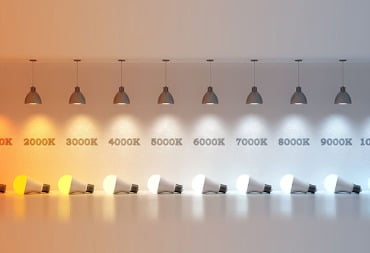
It is essential to always know what colors to choose and create a suitable combination for the target audience and theme. This is so because having excellent knowledge about how each color behaves will enable tiny modifications whenever required. The fixtures used provide custom mixes, so any minute detail could be altered to one’s linking. Looking at stage lighting color schemes and combinations can widen the choice range:
Monochromatic Color Schemes
As the name suggests, ‘mono’ means 1 colored scheme. The monochromatic scheme revolves around a single hue. Monochromes symbolize extreme one-sided passion; thus, they must be used carefully. Using this scheme on stage performances means focusing on a single color and its varied tints that can be reasonably differentiated.
How can a single color be a color ‘mix’? That is why many monochromatic schemes use different saturations, tones, tints, shades, and luminosities for a single hue. Don’t underestimate the depth of a single color. Sometimes, other factors can remain constant, but the overall classification of monochromes is based on the fact that only a single color is used. This is called ‘visual trauma’ and can be an eye-catching choice. Choosing the hue can come off as a challenge in monochromatic color schemes due to the risk that most of the audience may dislike that color. This type of color mixing must be used with caution and must be relevant to the kind of environment one is going for.
2-Color Complementary Schemes
Also identified as just complementary schemes, this color palette combination uses those colors that are dead opposites on the wheel. Many masterpieces are made using complementary schemes. When combined with different shades, saturations, and luminosities, one can achieve a broad spectrum of colors to paint the audience a beautiful stage painting. The reason they are well-known is that they simply look great together. The wheel is made through science, and science always goes by rules. Try going out and looking for complementary stage lighting color schemes; they are not so hard to find. Here are some that you can notice:
- Green and red
- Purple and Yellow
- Amber and Teal
- Blue and Yellow
This color scheme denoted a well-balanced nature, in contrast to monochromatic schemes, which are incredibly passionate in character.
Multi-Color Methods
Lastly, there is no need to limit the number of colors used on stage. There are a billion different colors in the universe, and if the outline of the stage performance happens to have distinguished ambiguousness, then feel free to utilize these colors. Combined with different saturations and whatnot, the universe is the playground. Any combination of more than 2 in number color comes under this color scheme. It is not hard to get beautiful color combinations through LED par light manufacturers in China. The following forms the classification:
- Triadic: Apart from the traditional wheel arrangement of colors, colors can also be arranged as triangles. Complementary colors from this triangle are called triadic color schemes. They are grouped into three. Examples include purple, yellow, and blue.
- Tetrads: These colors form a set of 4, starting with 2 analogous ones and their respective complements. Examples include blue, orange, purple, and yellow.
- Analogous: These colors sit next to each other on the color wheel. The usage of analogous colors is typically for highlighting a particular color’s meaning. Hence, they are appealing for stage lighting.
Things To Consider When Choosing Your Stage Lighting Color Scheme
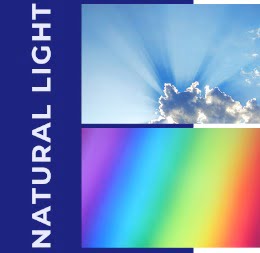
Keep in mind that no rules of thumb are involved in choosing colors for stage lighting. One person can find a color repulsive, while the same color can be visually appealing to others. Combining all the other factors mentioned above, certain things can help and guide the stage in the light of creativity and appeal. There is no restriction for being artistic and breaking the rules every now and then. After all, craziness is an appeal in itself. Having said that the following forms certain bases on which colors can be chosen:
The Show Theme
Apart from the regular deep meaning behind specific colors, it is very much an important fact to stay original and relevant to the theme of one’s show. Every kind of art has elemental composition, a theme that paints the canvas in white before any building takes place.
The best way one can tell a story is through imagination. Imagery is significant to attract the audience because people first have to see to think. In the modern era of Ultra HD screens, good lighting and stunning visuals are now considered the bare minimum. Thus, in a stage performance, visuals are given the top priority as they back up emotions. Going with a bland and monotone vibe can cut short your audience mid-journey. A color scheme consistent with the performance theme is the key to a smooth plan.
Dominant Hue And Contrast Colors
Another critical factor that influences color scheme decisions is the dominant hue accompanied by contrasting colors. They are essential when it comes to creating a color palette in general. Before proceeding further, what exactly is a contract?
Contrasting colors are basically those colors whose values are contrasting. Contrast is a common way of shifting focus between objects and directing attention. They are commonly used to emphasize a particular character while blanking out the background.
Dominant colors or hues provide this much-needed focus in climaxes. They help pull particular objects to the viewer while other colors push them back into debris. Contrasting colors play with space, and dominant hues make the space. Some rules that can help understand dominant and submissive hues are as follows:
- Secondary colors dominate primary ones
- Saturated colors dominate less-saturated and unsaturated colors
- Warm colors dominate cool ones
- Lavender and pastel violet are recession colors
- White color is more important than people think
Design The Performance With Stage Lighting Color
Stage performance and best color combos work hand-in-hand. Beginning the stage planning through a set of colors is a common way of establishing color palettes. Ask specific questions about the desired feeling, context, content, environment, mood, and experience. Be the audience before the audience attends the concert. The colors come automatically when the theme is clear.
Get the Right Stage Lights for Your Project
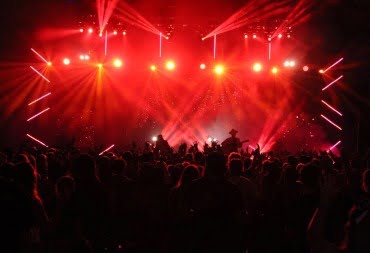
Once the stage lighting color combinations are set, the next challenge is finding the best ones. Choosing the right stage lights that complement the performance and stay relevant to the theme depends on the kind of LED stage light supplier at hand. Our products never compromise on quality when it comes to stage lighting. Some of our best products are listed as follows:
LED Stage Lights
The best kind of LED stage lighting equipment is those that can color mix accurately and in unlimited amounts. With the latest voice-controlling technology, one can use our LEDs in plays and musical performances. Flexible ones are optimal for smooth movement as well.
Specifications Of Stage Lights
With a power of 350 W, these LED stage lights are practically immortal. With our diverse choice range, there is one for every occasion. Our LEDs have about 15 channels, with an input voltage of AC100-240V and 50-60 HZ on end. We offer lamp-bead types with RGBW color schemes.
Control Methods
Our LEDs provide dynamic control modes with about 13 colors and color patterns (including whitespace). Bulk quality DMX512/MAST is highly recommended, with diverse SLAV/Sound/Auto sound options.
Mount Methods
The lamp beads are made with fine-quality LEDs, with the brightness exceeding the sun. Having a high-power supply fixed with a radiator, these LED stage lighting equipment can be used endlessly. A constant motherboard and 28V cooling fan are added advantages for a long-lasting concert.
Lighting the Future: Stage Lighting and Color Design Evolve
LEDs Brighten the Way
The future shines bright with LED advancements. Expect even more vibrant colors and energy efficiency, allowing for richer, more dynamic stage visuals without the environmental guilt.
Smart Lights, Smarter Shows
Imagine changing a scene’s mood with just a tap on a screen. Smart lighting systems are set to revolutionize stage design, offering real-time adjustments and interactive audience experiences.
Green is the New Black
Sustainability isn’t just a trend—it’s the future. Eco-friendly lighting practices are becoming standard, balancing dazzling performances with a lighter ecological footprint.
Augmented Reality Meets Tradition
Augmented reality and projection mapping are blurring the lines between the physical and digital. These tools promise to add layers of depth and fantasy to live performances, all without a single set change.
Personalized Experiences
The future may hold personalized lighting experiences, where your phone could tweak the visual ambiance to your liking. It’s an exciting prospect that could redefine audience engagement.
As we look forward, the intersection of technology and creativity in stage lighting and color design is poised to offer unprecedented possibilities, making every performance not just a show but an experience.
Conclusion
Wrapping it up, there is nothing that could possibly stop me from getting creative with colors. Everything about a stage is related to art, and colors form the primary base. One must never compromise on quality when it comes to stage lighting. Make sure to always review the requirements and lay a solid foundation. Keeping stage light color theory in mind will refine the experience by a considerable margin. Finding the best lighting equipment for a brand-new stage and audience is simple. With LED lights ranging from downlights to LED corner lights, we have everything to make the setting come to life.

